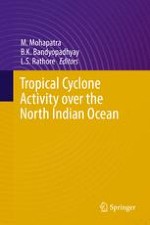2017 | OriginalPaper | Buchkapitel
Standard Operation Procedure for Tropical Cyclone Vital Parameters over North Indian Ocean
verfasst von : M. Sharma, M. Mohapatra
Erschienen in: Tropical Cyclone Activity over the North Indian Ocean
Aktivieren Sie unsere intelligente Suche, um passende Fachinhalte oder Patente zu finden.
Wählen Sie Textabschnitte aus um mit Künstlicher Intelligenz passenden Patente zu finden. powered by
Markieren Sie Textabschnitte, um KI-gestützt weitere passende Inhalte zu finden. powered by
